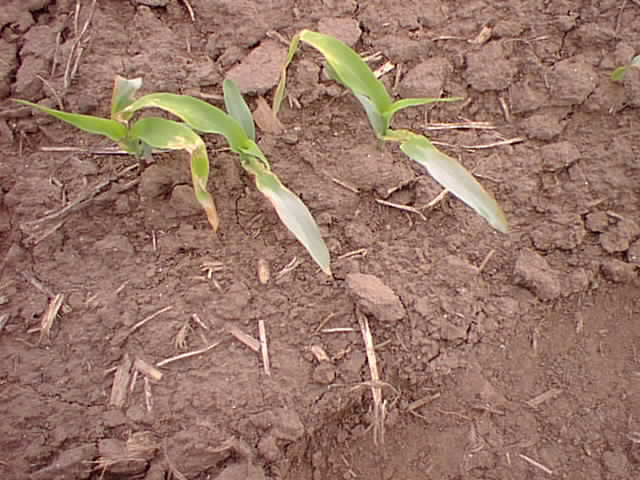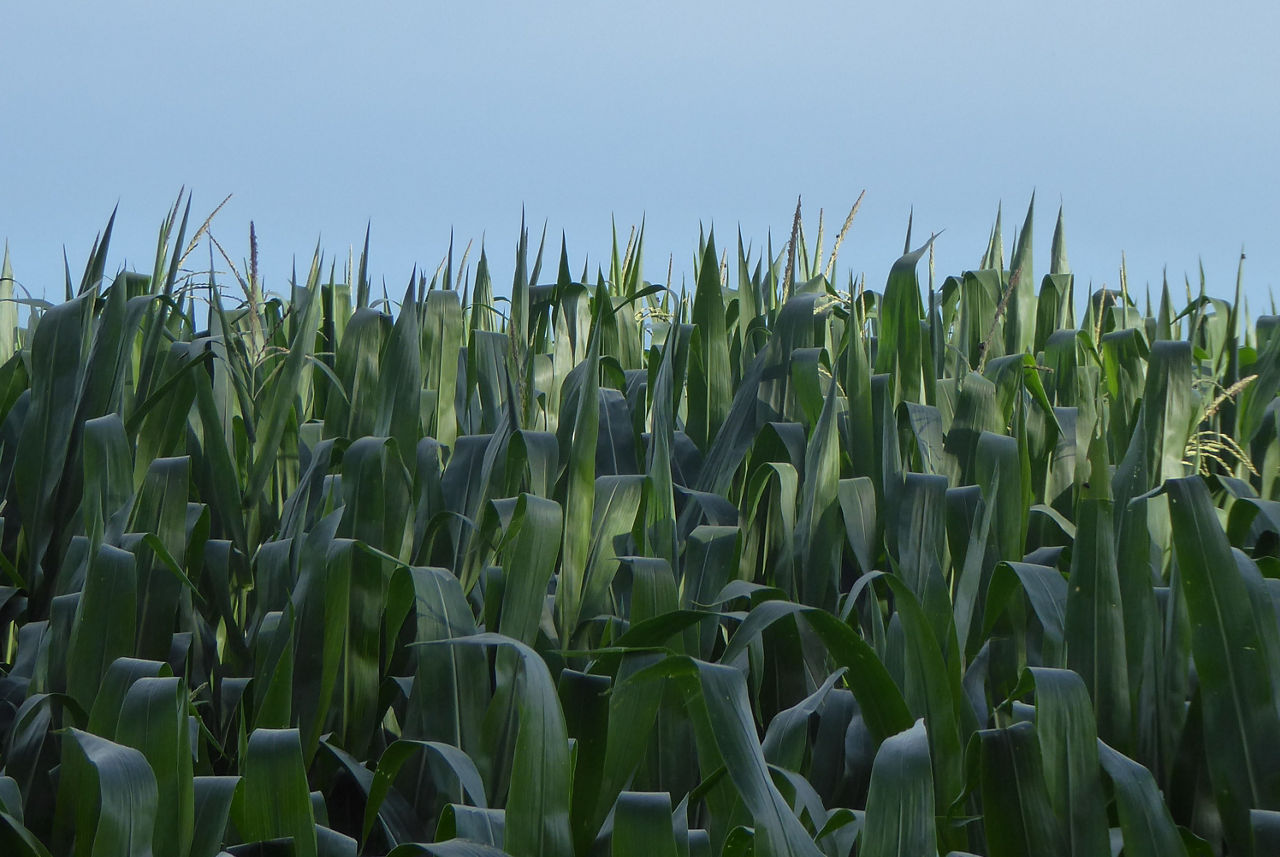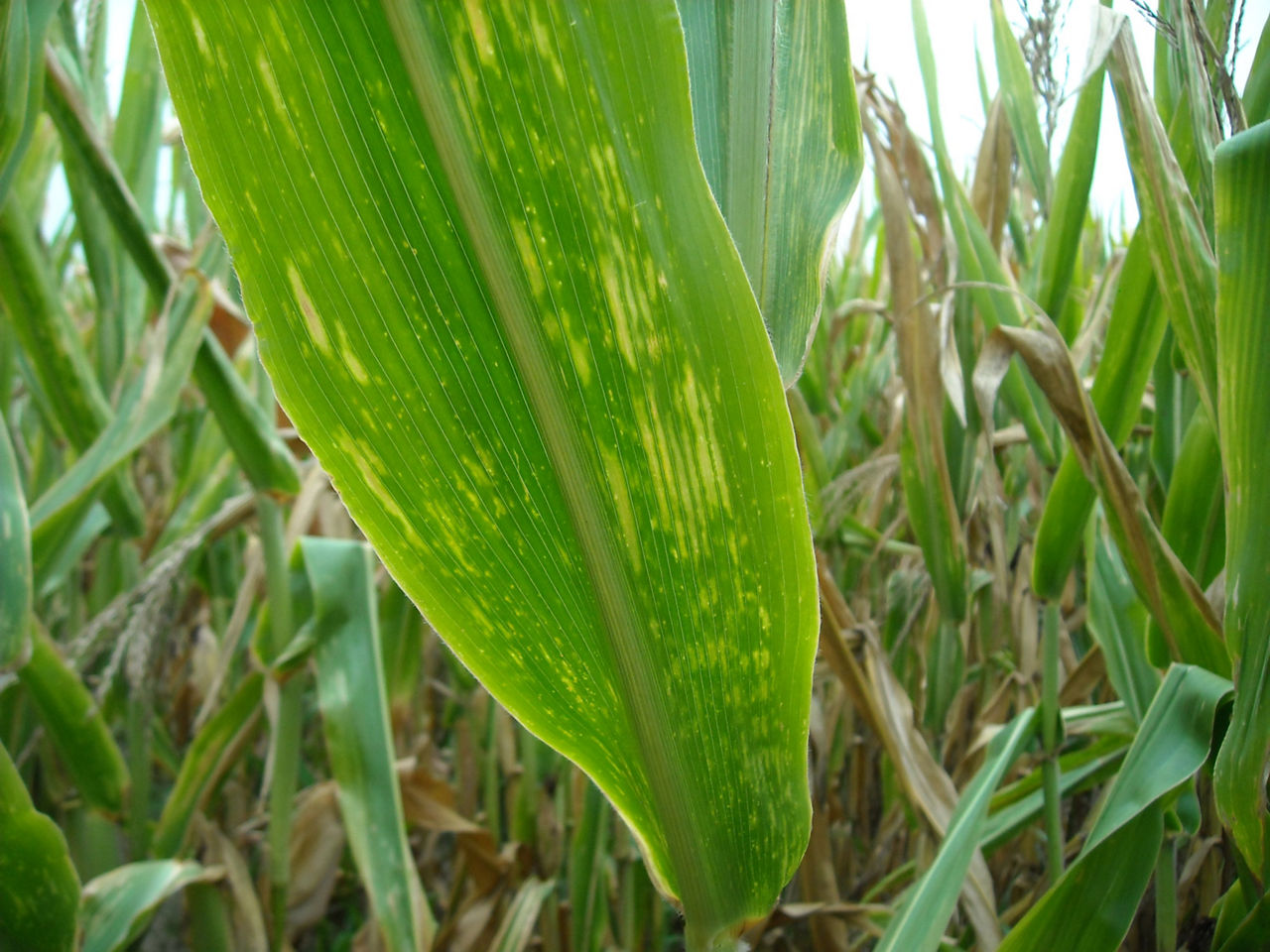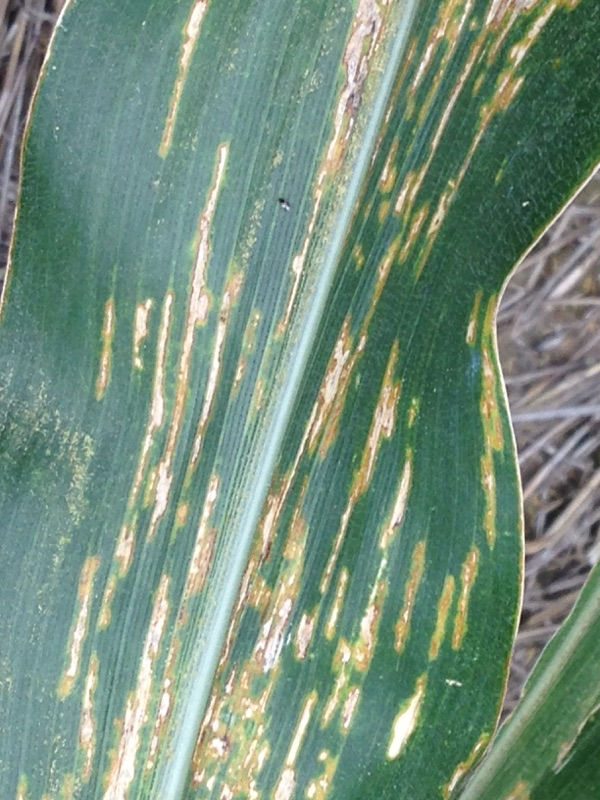Sunscald in Corn
July 16, 2025
- Bright sunshine along with other factors can cause a silvering or graying of some corn leaves.
- In general, sunscald does not result in lost yield potential.
Corn plants enjoy being in bright sunlight that helps facilitate photosynthesis; however, under the right conditions the bright sunshine may cause leaves to take on a silvery or gray cast or to have streaks of browning between leaf veins. When first viewed, one may think the discoloration is the result of a fungal, viral, or bacterial disease.
The symptomology is the result of several interacting environmental factors including bright sunlight, high heat, drought, moisture content within plant cells, moisture content on the leaves, cool evenings, wind, plant transpiration and evaporation, and leaf orientation relative to the sun. Young seedlings may show silvering because the leaves are fully exposed to sunlight without any shading from other plants. Dew-laden leaves that are oriented toward a bright early morning sun can be quickly heated, which can cause the leaf to become scorched (Figure 1). The scorched tissue may encompass the whole leaf or just portions. The affected tissue generally turns brown within a few days, though this causes negligible or no loss of yield potential. Older plants may develop silvering on sun-oriented leaves after heavy dews (Figure 2).
At night, horizontal leaves and unshaded leaves on seedlings or older plants may lose heat to the atmosphere on clear nights when exposed to early season temperatures in the 30s or low 40s °F (−1 to 5 °C). This cooling effect can cause these leaves to become silvery to grayish in color (Figure 1). Leaf portions that are shaded do not exhibit the discoloration. This phenomenon has been referred to as silver leaf.1


The same symptoms can appear under heat and drought stress, because these conditions slow transpiration. Essentially, the plants are unable to cool themselves through transpiration, which results in the leaves becoming scalded by the sun. In extreme drought and heat, the upper leaves may quickly lose water and become brown and necrotic. If this occurs during grain fill, there may be lost yield potential, because sugar production from photosynthesis is reduced. Photosynthesis reduction begins when temperatures exceed 86 °F (30 °C) and photosynthesis ceases altogether if the temperature reaches 115 °F (46 °C).2 In addition, brown linear streaks may develop between the leaf veins because of heat stress and bright sunlight (Figure 3). Because the streaks are not pathogenic, the streaks do not become larger; however, they can resemble pathogenic lesions such as those from bacterial leaf streak (Figure 4).


Sources
1Nielsen, R.L. (Bob). 2021. “Silver leaf” symptom in corn. Corny News Network. Purdue University. https://www.agry.purdue.edu/ext/corn/news/timeless/SilverLeaf.html
2Wallau, M. 2023. Managing the effects of excessive heat in silage corn and other crops. IFAS Extension. University of Florida. https://nwdistrict.ifas.ufl.edu/phag/2023/09/15/managing-the-effects-of-excessive-heat-in-silage-corn-and-other-crops/
Web sites verified 7/2/25. 1222_596001